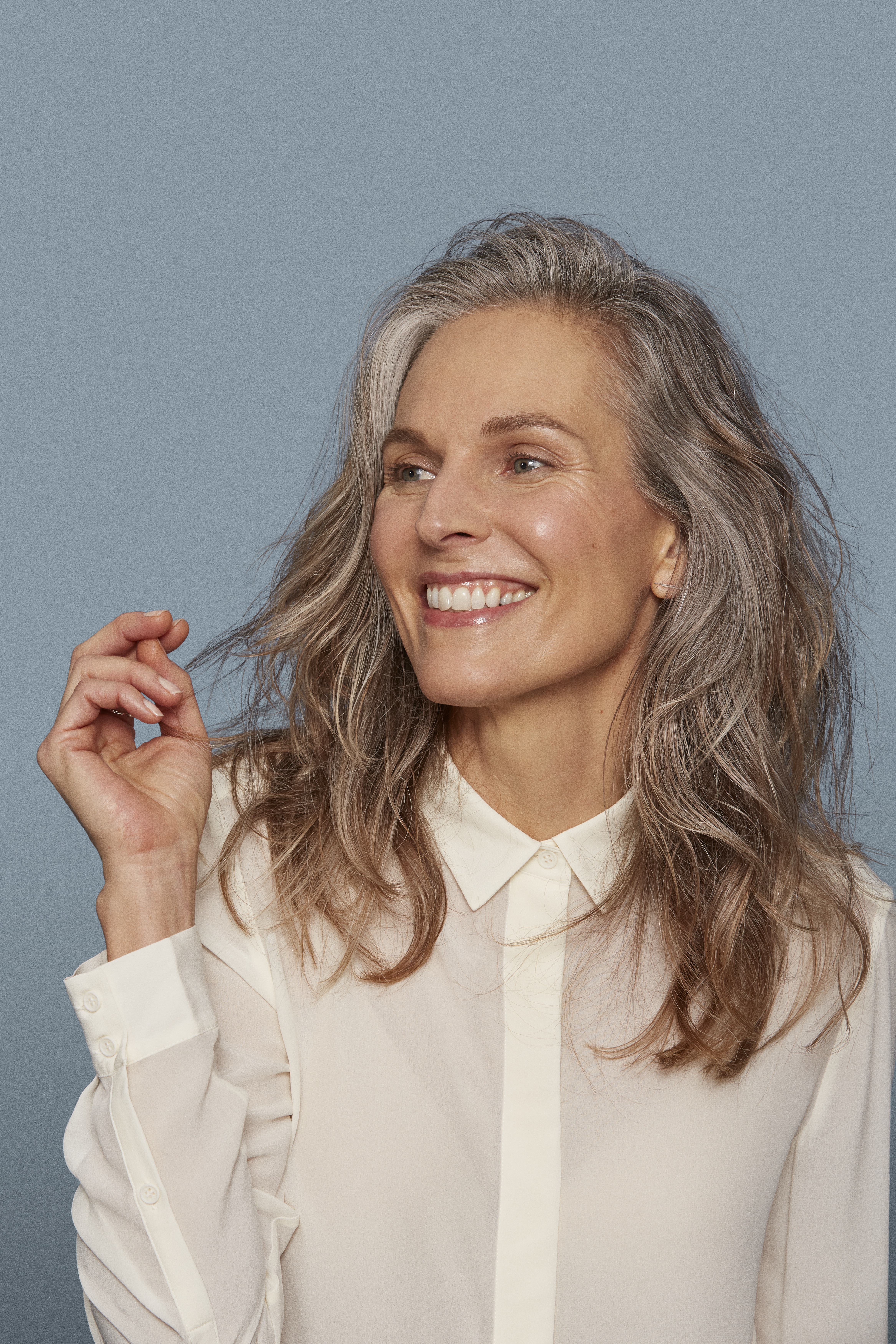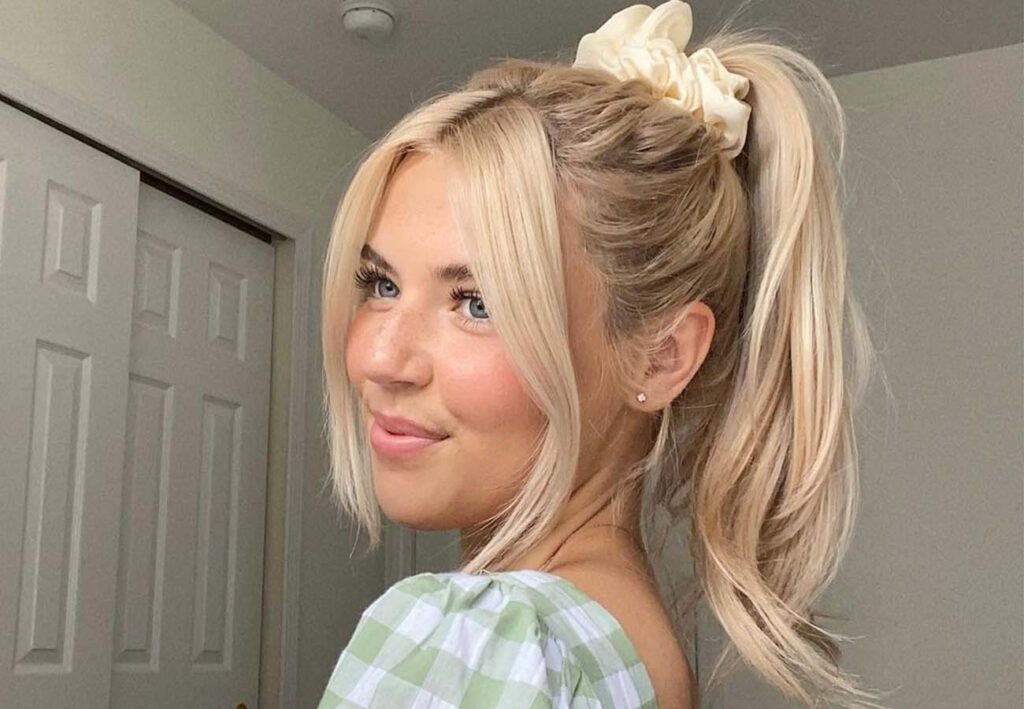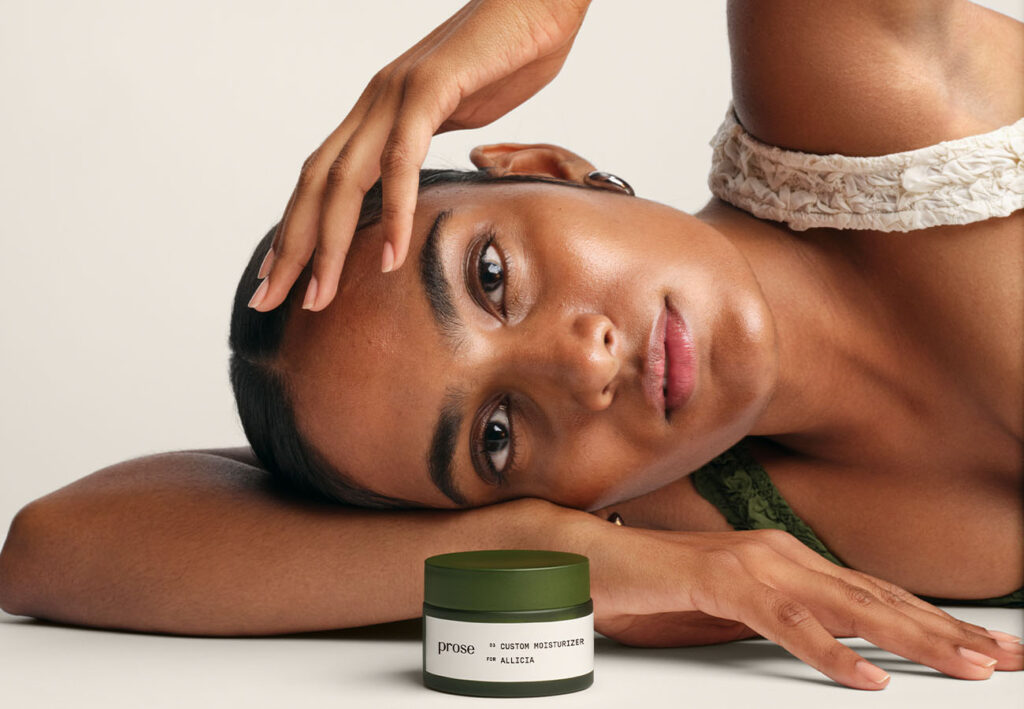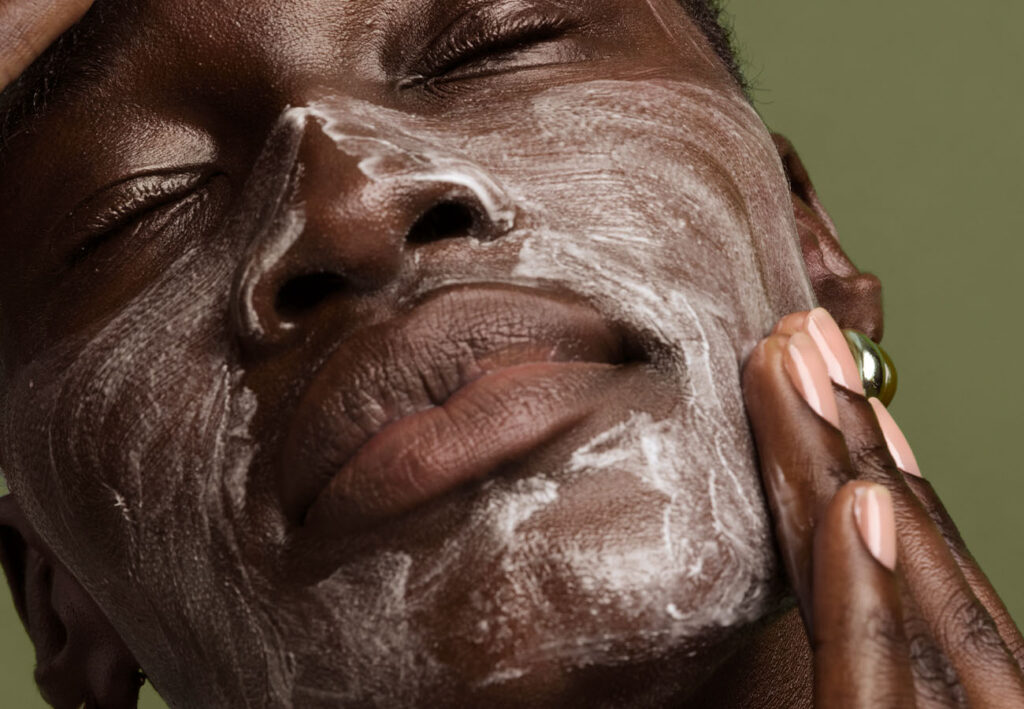Going gray is genetic
One of the most interesting aspects of hair is its potential to come in a seemingly infinite shade range. There’s raven black and strawberry blonde, stark white and auburn brown, and everything in between —sometimes within a single family. This is all determined by melanin, the pigment in hair responsible for color. Melanin comes in two types, dark (eumelanin) and light (pheomelanin). The pigments come together to create your unique hair shade. As you age, there is a decrease in melanin production that causes hair to turn a gray or white shade. Although it can often be one of the first signs of aging, the actual time when this begins to happen differs for everyone and is mostly tied to genetics. This means that while the myth that if you pluck one gray, five will grow in its place is fun to joke about, there’s (thankfully) no science to back this up.
Protect your scalp to preserve density
The amount of hair you have can be determined by genetics, nutrition and hormonal shifts due to life changes like, puberty, pregnancy and menopause. Each of these factors affects the life phase of each hair follicle, impacting how many strands of hair you have at once (aka. your density) The hair follicle grows in three stages — growth, transition and resting phases — with the length of each phase differing slightly by individual. As you get older, your hair spends less time in the growth phase and more time in the resting phase, which means the amount of hair you’re losing is exceeding the amount of new hairs coming in.
If a loss in hair density is an issue that you’re looking to address, maintaining a healthy scalp can certainly help. Ingredients like Pea Sprout Extract help to stimulate the follicle and encourage growth, while Locust, Soybeans and Corn Starch form a complex that works to add volume to strands, giving the illusion of more density. Preventing breakage and premature loss through good hair health is also helpful. Look for ingredients like Collagen and Hyaluronic acid to repair hair fibers from the outside while also using their nutritive properties to repair from the inner cortex.
Choose sulfate-free to protect dry hair
Another change that you’ll notice over time is a shift in the actual look and feel of your hair, which can also be triggered by the same hormonal changes that affect hair loss. Over the years, hair strands tend to become more dry and damage-prone. Choose sulfate-free shampoos, as they won’t strip your hair of its natural oils, and support with ingredients that help with moisture retention, like Shea Butter or Coconut Oil. Using products with Fruit Acids and Vinegars help repair the damaged cuticle layer, which combats dullness and adds shine.
Everyone’s hair goes through it’s own journey. Bring us along and we’ll make sure you have the right ingredients to keep your hair at its healthiest. Let us know how we can help by taking our consultation here.





